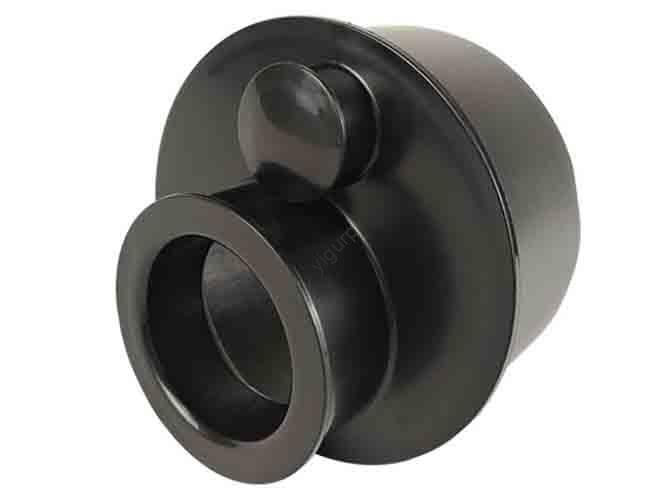Quando si sviluppano nuovi prodotti, scegliere i materiali giusti per prototipi e parti replicate influisce direttamente sulla precisione del test, Efficienza della produzione, e controllo dei costi. Questo articolo analizzerà i materiali comuni, i loro confronti di prestazioni, e strategie di selezione per aiutarti a prendere decisioni informate.
1. Materiali di base per il prototipo & Parti di replica: Panoramica & Tratti chiave
Below is a detailed table of 7 materiali ampiamente utilizzati, including their core advantages, typical applications, and limitations—designed to let you quickly match materials to your needs.
| Nome materiale | Vantaggi fondamentali | Applicazioni tipiche | Limitazioni |
| Poliuretano (Pu) | Alta resistenza, good expandability; flexible/rigid options | Soft rubber parts, ABS/PC-like replicas | Lower heat resistance than high-temp materials |
| Silicone | Excellent elasticity, Facile Demolding | Elastic components (PER ESEMPIO., guarnizioni, impugnature morbide) | Low mechanical strength; not for load-bearing parts |
| Addominali | Forza equilibrata & tenacità, facile elaborazione | Structural prototypes (PER ESEMPIO., Alloggi, cornici) | Poor chemical resistance to strong solvents |
| Pp (Polipropilene) | Good chemical stability, Resistenza al calore (~100°C) | Parti di contatto alimentare, Componenti leggeri | Low impact resistance at low temperatures |
| PC (Policarbonato) | Elevata trasparenza, forte resistenza all'impatto | Parti trasparenti (PER ESEMPIO., lenti, copertine) | Soggetto a graffi; higher cost than acrylic |
| Acrilico (PMMA) | Trasparenza superiore, easy polishing | Display prototypes (PER ESEMPIO., exhibition models) | Fragile; lower impact resistance than PC |
| Materiali resistenti ad alta temperatura | Resiste >200° C.; maintains performance in heat | Parti del motore, high-temp tooling | Costo più elevato; complex processing |
2. Come confrontare materiali per esigenze specifiche? (Contrasto & Guida alle decisioni)
Not sure whether to pick PC contro. Acrilico for a transparent part, O PU contro. Silicone for a flexible component? Use these side-by-side comparisons to resolve common dilemmas.
2.1 Parti del prototipo trasparenti: PC contro. Acrilico
| Fattore di confronto | PC (Policarbonato) | Acrilico (PMMA) |
| Trasparenza | ~90% (slight blue tint) | ~92% (clearer) |
| Resistenza all'ambiente | Eccellente (unbreakable in most cases) | Povero (easily cracked) |
| Resistenza a graffi | Basso (ha bisogno di rivestimento) | Medio (better than PC) |
| Costo | Più alto | Inferiore |
| Raccomandazione | For parts needing durability (PER ESEMPIO., coperture di sicurezza) | For display-only parts (PER ESEMPIO., model showcases) |
2.2 Parti prototipo flessibili: PU contro. Silicone
If your project requires flexibility, chiedere: Do I need strength or extreme elasticity?
- Pu: Ideal for parts that need both flexibility and structural support (PER ESEMPIO., soft rubber grips for tools). It can mimic the hardness of ABS or PC, making it versatile for functional testing.
- Silicone: Better for parts that prioritize elasticity and heat resistance (PER ESEMPIO., seals for high-temp devices). Tuttavia, its low mechanical strength means it’s not suitable for load-bearing roles.
3. 3 Fattori chiave per scegliere il materiale giusto
Selecting prototype and replica materials is not about “the best material”—but the “most suitable” one. Follow this linear decision process:
- Define Performance Requirements First
Chiedere: La parte sarà esposta ad alte temperature? Does it need transparency or flexibility? Per esempio:
- High-temp environments → Choose high-temperature resistant materials.
- Display purposes → Prioritize acrylic (economico) o PC (durevole).
- Costo del saldo & Tempi di consegna
- Basso costo, fast-turnaround prototypes → ABS or PP (facile da elaborare, widely available).
- High-cost, specialized needs → PC or high-temperature materials (justify with critical performance demands).
- Consider Post-Processing Needs
- If you need polishing (PER ESEMPIO., parti trasparenti) → Acrylic is easier to polish than PC.
- If you need painting or bonding → ABS adheres better to paints than PP.
4. La prospettiva della tecnologia Yigu sulla selezione dei materiali prototipo
Alla tecnologia Yigu, crediamo che la selezione dei materiali per prototipi e parti replicate should align with “fast validation + cost optimization.” Most clients initially lean toward over-spec materials (PER ESEMPIO., choosing PC for simple display models), which increases costs unnecessarily. Our team recommends starting with a “minimum viable material”: use ABS for structural tests, acrylic for displays, and PU for flexible simulations. As the product iterates, we then upgrade to specialized materials (PER ESEMPIO., high-temperature options) only when performance demands it. This approach cuts lead time by 30% on average and reduces material costs by 20%, while still ensuring accurate prototype validation.
Domande frequenti: Domande comuni sul prototipo & Replica Materials
- Q: Can silicone be used directly as a prototype material, or only for making molds?
UN: Silicone can be used directly for prototypes—especially for elastic parts like gaskets or soft covers. Tuttavia, it’s not suitable for load-bearing or high-strength applications due to its low mechanical strength.
- Q: Which material is better for food-contact prototype parts: PP or ABS?
UN: PP is the better choice. It has good chemical stability, is non-toxic, and meets food safety standards (PER ESEMPIO., FDA approval). Addominali, al contrario, may release harmful substances when in contact with food or high temperatures.
- Q: How do I improve the heat resistance of a prototype if I’m using PU?
UN: You can add heat-resistant additives to PU during processing (PER ESEMPIO., glass fiber or ceramic fillers) to 提升 its heat resistance by 10–20°C. For parts needing >150°C resistance, Tuttavia, it’s better to switch to dedicated high-temperature materials.
